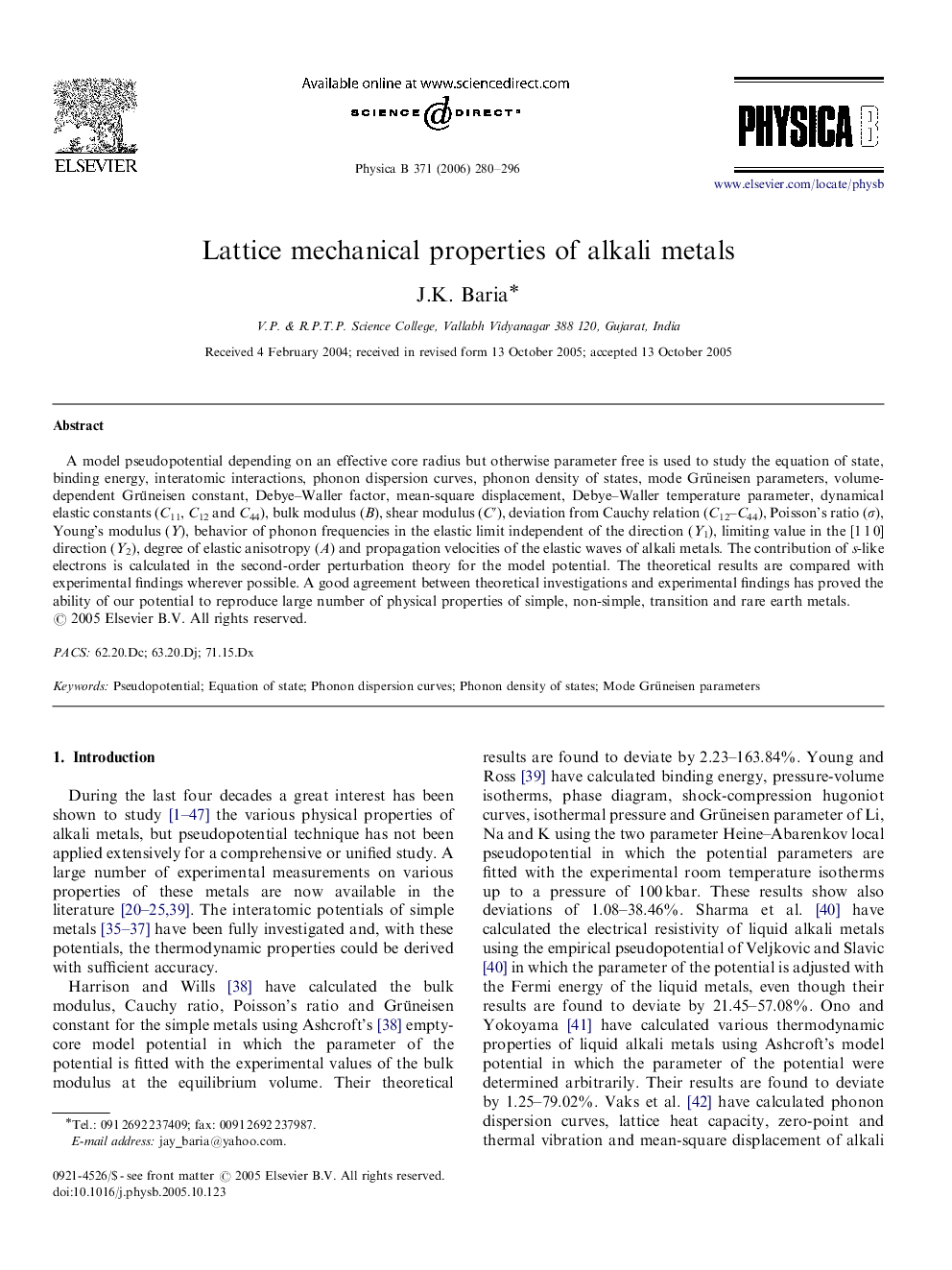| Article ID | Journal | Published Year | Pages | File Type |
|---|---|---|---|---|
| 1815730 | Physica B: Condensed Matter | 2006 | 17 Pages |
A model pseudopotential depending on an effective core radius but otherwise parameter free is used to study the equation of state, binding energy, interatomic interactions, phonon dispersion curves, phonon density of states, mode Grüneisen parameters, volume-dependent Grüneisen constant, Debye–Waller factor, mean-square displacement, Debye–Waller temperature parameter, dynamical elastic constants (C11, C12 and C44), bulk modulus (B), shear modulus (C′), deviation from Cauchy relation (C12–C44), Poisson's ratio (σ), Young's modulus (Y), behavior of phonon frequencies in the elastic limit independent of the direction (Y1), limiting value in the [1 1 0] direction (Y2), degree of elastic anisotropy (A) and propagation velocities of the elastic waves of alkali metals. The contribution of s-like electrons is calculated in the second-order perturbation theory for the model potential. The theoretical results are compared with experimental findings wherever possible. A good agreement between theoretical investigations and experimental findings has proved the ability of our potential to reproduce large number of physical properties of simple, non-simple, transition and rare earth metals.
